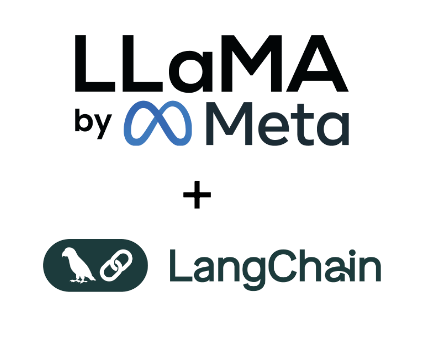Beyond the Chatbox
Why LangChain + LLaMA Beats GPT-4 for Business AI
Most people’s first impression of large language models comes from a chatbox. As a consumer, they try ChatGPT, Claude, or Gemini. It feels magical. It even completes code. It reasons. It’s fluent. So they assume that whichever model performs best in these one-off prompts must be the best choice for business too.
Big mistake.
In real-world applications, you’re not asking for clever answers to trivia. You’re building systems: document processors, knowledge assistants, workflow orchestrators, massive data ingestors, predictive analytics, prescriptive insights, co-pilots. What matters isn’t just how smart the model sounds in zero-shot prompts, but whether the stack can scale, adapt, and integrate.
I commonly get the question “What LLM do you like?” and for the time being I tell every company I work with to stop obsessing over consumer demos and start thinking like an architect. From that vantage point, right now the best pairing in the business today is LangChain + Meta LLaMA.
In this article I break down why.
The LLM Performance Fallacy
Consumer models like GPT-4o and Claude 3 give an illusion of superiority because they’ve been optimized for immediacy. These models benefit from:
Prompt engineering behind the scenes
Usage heuristics that steer answers
Multi-agent workflows bundled invisibly into the experience
But in production, you're not running zero-shot prompts in a UI. You’re chaining documents, querying structured data, invoking functions, storing context, retrieving from memory, and looping over logic.
That’s where developer-centric stacks like LangChain and open-source models like LLaMA 3 pull ahead.
Don’t Choose a Model. Choose a Stack.
In 2025, a business-grade LLM deployment is never “just the model.” It’s a stack. And most enterprise use cases need:
An LLM
A vector store
A retrieval layer (RAG)
A memory component
Tool access (code, search, API)
Observability and Reporting
Privacy controls
From my optic, LangChain is the most battle-tested orchestration framework for large, enterprise level B2B applications. It abstracts the hard parts of building agents, toolchains, and workflows, and gives you compatibility with any model. But it becomes even more powerful when paired with an LLM you control.
Why LLaMA + LangChain Wins
Meta’s LLaMA 3 family is performant, open-weight, and supported across nearly every major framework: HuggingFace, Ollama, LM Studio, vLLM, LangServe.
When you deploy LLaMA with LangChain, you get:
Full stack control: run on GPU clusters, your own VPC, or edge devices
Data privacy: no sending PII or IP to an API endpoint
Cost efficiency: inference costs are ~10x lower than GPT-4
Modifiability: you can fine-tune it, quantize it, or train adapters
Interoperability: easily integrate with Weaviate, Qdrant, Pinecone, or your own Postgres DB
If your use case involves RAG, internal document automation, or task-based agents, this pairing is optimal. And if you're building a business on top of LLMs—meaning your margins depend on cost-per-inference—open models are the only sustainable choice. (look for a future article on LLM stack financial models)
LangChain allows you to fluidly switch between these modes, which is key when business needs evolve.
Reference Architecture
The stack I recommend:
LangChain as the core framework
Meta LLaMA 3 running via Ollama or vLLM
Qdrant or Weaviate for vector search
LangSmith or Prometheus for observability
Optional: LangServe to productionize chains via REST APIs
What About GPT-4 or Claude?
They’re excellent for single-turn reasoning and work well for internal copilots where trust and latency aren’t critical. But I’ve felt they become a liability in high-volume or privacy-sensitive workflows:
You can’t tune them
You can’t host them
You can’t optimize inference
That’s fine for experiments. Not for core systems.
TLDR
Businesses don’t run on clever prompts. They run on pipelines, observability, cost control, and trust. If you're building the next-gen knowledge platform, internal co-pilot, or RAG-tweaked workflow systems, don't just ask which model “feels” the smartest in a demo. Ask which stack lets you be the smartest, longest. For me, right now, the answer today is clear: LangChain + LLaMA.
As always, I love contradiction. Please share your thoughts.


